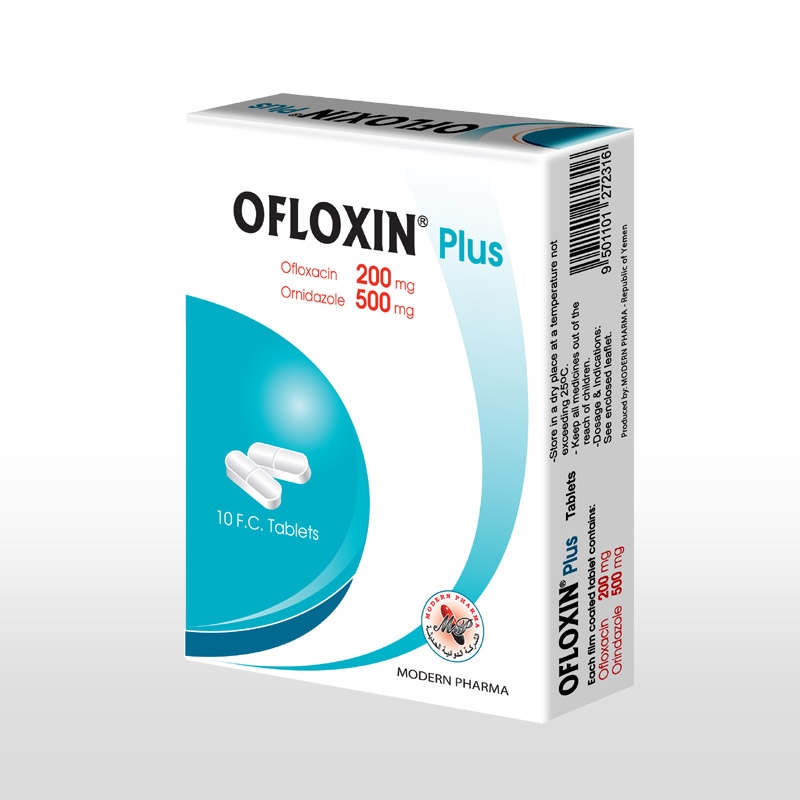OFLOXIN Plus
- OFLOXIN® plus is a fixed dose combination of ofloxacin, a second
generation quinolone antibiotic, and ornidazole, a 5-nitroimidazole derivative.
- Ofloxacin is a broad spectrum antibiotic, exert a bactericidal effect on
susceptible microorganisms by inhibiting DNA gyrase, an essential enzyme
that is a critical catalyst in the duplication, transcription, and repair of bacterial
DNA.
- Ofloxacin has been shown both in vitro and in specific clinical infections to
be active against most strains of the following organisms:
Aerobic gram-positive bacteria: Staphylococcus aureus, Staphylococcus
epidermidis, Streptococcus pneumoniae.
Aerobic gram-negative bacteria: Enterobacter cloacae, Haemophilus
influenzae, Proteus mirabilis, Pseudomonas aeruginosa, Serratia marcescens.
Anaerobic bacteria: Propionibacterium acnes.
- Ofloxacin is rapidly and well absorbed from the gastrointestinal tract.
Absorption may be delayed by the presence of food, but the extent of
absorption is not substantially affected. About 25% is bound to plasma
proteins. Ofloxacin is widely distributed in body fluids, including the CSF, and
tissue penetration is good. It crosses the placenta and is distributed into breast
milk. It also appears in the bile. The elimination of ofloxacin is biphasic;
half-lives of about 4 to 5 and 20 to 25 hours have been reported for the 2
phases, respectively. Ofloxacin is eliminated mainly by the kidneys. Between
65 to 80% of a dose is excreted unchanged in the urine over 24 to 48 hours,
resulting in high urinary concentrations. Less than 5% is excreted in the urine
as metabolites. From 4 to 8% of a dose may be excreted in the faeces. Only
small amounts of ofloxacin are removed by haemodialysis or peritoneal
dialysis.
- Ornidazole, like other nitroimidazoles, kills the susceptible organisms by
targeting the DNA synthesis and inhibits the nucleic acid formation.
- Ornidazole is active against several protozoa including Balantidium coli,
Entamoeba histolytica, Giardia intestinalis and Trichomonas vaginalis.
Most obligate anaerobic bacteria including bacteroides and clostridium spp.
are sensitive in vitro to ornidazole. It is bactericidal. It also has activity against
the facultative anaerobes Gardnerela vaginalis and Helicobacter pylori and
against some sphirochaetes.
- It shows superior efficacy as compared to other nitroimidazole and is thus
preferred in treatment of protozoal infections.
- Ornidazole is rapidly absorbed from the gastrointestinal tract. Peak plasma
concentration is achieved within 3 hours. The plasma elimination half-life of
ornidazole is 12 to 14 hours. Less than 15% is bound to plasma proteins. It is
widely distributed in body tissues and fluids including the cerebrospinal fluid.
Ornidazole is metabolized in the liver and
is excreted in the urine, mainly as conjugates and metabolites, and to a lesser
extent in faeces. Biliary excretion may be important in the elimination of
ornidazole and its metabolites.


